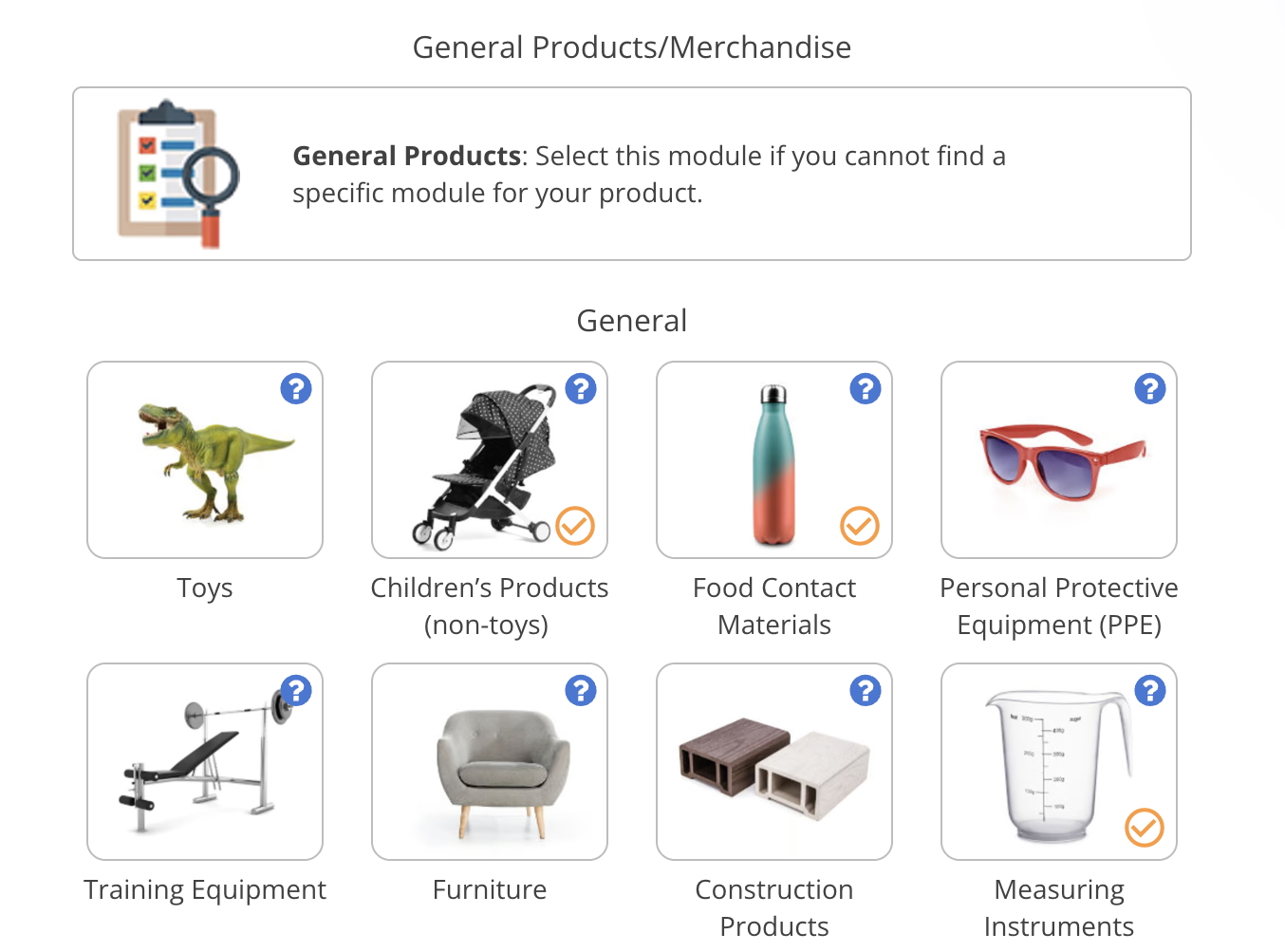Planning to import, manufacture or sell electronics in the UK post Brexit? This guide covers electronic product regulations in the United Kingdom, excluding those that relate to Northern Ireland.
As a former member of the European Union, the UK has its own legislation that corresponds with EU legislation for specific products. For instance, the following UK legislations relate to the following EU legislative titles respectively:
a. Electromagnetic Compatibility Regulations 2016 – Electromagnetic Compatibility Directive
b. Electrical Equipment (Safety) Regulations 2016 – Low Voltage Directive
c. Radio Equipment Regulations 2017 – Radio Equipment Directive
Content Overview

FREE CONSULTATION CALL (30 MIN)
 Ask questions about compliance requirements
Ask questions about compliance requirements Countries/markets:
Countries/markets:
 Learn how we can help your business
Learn how we can help your business
You will speak with:Ivan Malloci or John Vinod Khiatani
Restriction of the Use of Certain Hazardous Substances in Electrical and Electronic Equipment Regulations
The aim of the Restriction of the Use of Certain Hazardous Substances in Electrical and Electronic Equipment Regulations 2012 is to regulate electrical and electronic equipment (EEE) to control certain hazardous substances and chemical levels found in said products.
It also imposes a legal duty on importers and manufacturers in their capacity as economic operators to notify enforcement authorities when they know or suspect that a product is non-compliant.
Product scope
The legislation covers most EEE products, cables, and spare parts such as:
- Electric and electronic tools
- Electronic toys
- Electronic sports equipment
- IT and telecommunications equipment
- Other electronics
Designated standards
Some standards are developed by consensus and are recognized by the UK Government. Such standards are designated standards and manufacturers who follow them can claim a presumption of conformity with the essential requirements of the legislation.
Here is an example of a designated standard:
a. BS EN IEC 63000 – Technical documentation for the assessment of electrical and electronic products with respect to the restriction of hazardous substances
Electrical Equipment (Safety) Regulations
The aim of the Electrical Equipment (Safety) Regulations 2016 is to ensure that the products placed on the market are safe. It does this by setting out legal obligations to importers and manufacturers to demonstrate that their products meet the principal elements of the safety objectives.
Product scope
The legislation applies to most electrical equipment designed or adapted for use ranging from 50 to 1,000 volts for alternating current and 75 to 15,000 volts for direct current.
Here are some examples of covered products:
- Plugs
- Adaptors
- Flexible cords
- Household appliances
- Laser Equipment
Designated standards
Here are some applicable designated standards:
a. BS EN 61558-2-7 – Safety of power transformers, power supplies, reactors, and similar products — Part 2-7: Particular requirements and tests for transformers and power supplies for toys
b. HD 639 S1 – Electrical accessories – Portable residual current devices without integral overcurrent protection for household and similar use (PRCDs)
c. HD 549 S1 – Conference systems – Electrical and audio requirements
d. BS EN 62020 – Electrical accessories — Residual current monitors for household and similar uses (RCMs)

Electromagnetic Compatibility Regulations
The aim of the Electromagnetic Compatibility Regulations 2016 is to ensure that EEE products which may generate electromagnetic disturbance entering the UK market are safe for use. It does this by imposing legal obligations to importers and manufacturers to show that their products meet the essential requirements.
To meet both essential requirements, the EEE product must:
a. Not generate an electromagnetic disturbance that exceeds the level in which the operation of radio and telecommunications equipment or other equipment is adversely affected
b. Have a level of immunity to other expected electromagnetic disturbances when used in the intended manner which does not result in unacceptable degradation of the product performance
Product scope
Here are some EEE products that fall under the ambit of this legislation:
- E-bikes
- AC adapters
- Electrical lamps
- Electrical accessories
- Digital displays
Designated standards
Here are some applicable designated standards:
a. BS EN 62020 – Electrical accessories – Residual current monitors for household and similar uses (RCMs)
b. BS EN 50130-4 – Alarm systems – Part 4: Electromagnetic compatibility – Product family standard: Immunity requirements for components of fire, intruder, hold up, CCTV, access control, and social alarm systems
c. BS EN 50370-1 – Electromagnetic compatibility (EMC) – Product family standard for machine tools – Part 1: Emission
d. BS EN 50370-2 – Electromagnetic compatibility (EMC) – Product family standard for machine tools – Part 2: Immunity
Radio Equipment Regulations
The aim of the Radio Equipment Regulations 2017 is to regulate the safety and electromagnetic compatibility of radio equipment and promote the protection of the radio spectrum by compelling importers and manufacturers to place products that:
a. Comply with a high level of safety
b. Have an adequate level of electromagnetic compatibility
c. Operate in such a manner that promotes the efficient use of the radio spectrum
Product scope
The legislation applies to most radio equipment. Here are examples of radio equipment products that are covered by the legislation:
a. Wi-FI enabled devices like smartphones, computer laptops, and video game consoles
b. Bluetooth enabled devices like Bluetooth earphones and watches
c. 4G/LTE/5G Enabled Devices like tablets, computer laptops, and mobile routers
d. GPS transceivers like Survey-grade GPS transceivers
e. Radar equipment like automotive radar equipment
f. Televisions and radio receivers like tuned radio frequency receivers
g. RFID devices like battery-assisted passive RFID
Designated standards
Here are some of the applicable designated standards:
a. BS EN 55035 – Electromagnetic compatibility of multi- media equipment — Immunity requirements
b. EN 300 422-1 V2.1.2 – Wireless Microphones; Audio PMSE up to 3 GHz; Part 1: Class A Receivers; Harmonised Standard covering the essential requirements of article 3.2 of Directive 2014/53/EU
c. EN 302 502 V2.1.1 – Wireless Access Systems (WAS); 5,8 GHz fixed broadband data transmit-ting systems; Harmonised Standard covering the essential requirements of article 3.2 of Directive 2014/53/EU
Ecodesign for Energy-Related Products and Energy Information Regulations
The aim of the Ecodesign for Energy-Related Products and Energy Information Regulations 2010 is to regulate energy-using products to ultimately reduce their environmental impact, improve energy efficiency, and reduce greenhouse gas emissions.
Additionally, it ensures that clear and consistent information on the energy usage of the product is readily available for consumers.
Product scope
The legislation covers specific product categories. Examples of such products affected by the legislation include:
- Circulators
- Computers
- Washing machines and washer-dryers
- Refrigerating appliances
Energy label
The energy label of the product placed on the market must include:
a. Product model number and suppliers name or trademark
b. Energy consumption with reference to product-specific regulations
c. Product’s energy efficiency class
Designated standards
Here are examples of some designated standards:
a. BS EN 16297-1 – Pumps – Rotodynamic pumps – Glandless circulators – Part 1: General requirements and procedures for testing and calculation of energy efficiency index (EEI)
b. BS EN 62552 – Household refrigerating appliances — Characteristics and test methods
c. BS EN 50564 – Electrical and electronic household and office equipment — Measurement of low power consumption
Toys (Safety) Regulations
The aim of the Toys (Safety) Regulations 2011 is to ensure a high level of safety in the use of toy products by imposing general and particular essential safety requirements for manufacturers and importers. This also includes electronic toys.
Product scope
The legislation covers most products designed or intended for playing by children under 14 years old, including electronic toys such as:
- RC cars
- Giant piano mats
- Electronic robots building kits
Designated standards
Here are some applicable designated standards:
a. BS EN 71-1 – Safety of toys – Part 1: Mechanical and physical properties
b. BS EN 71-2 – Safety of toys – Part 2: Flammability
c. BS EN 62115 – Electric toys – Safety
UKCA Mark
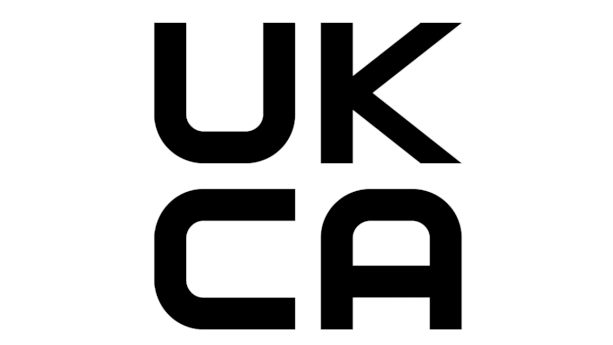
Products that are required to comply with one or more of the above-mentioned regulations, require the UKCA mark. Additionally, the UKCA mark may apply to other regulations not mentioned in this article.
We advice you to peruse through the schedules found in The Product Safety and Metrology etc. (Amendment etc.) (EU Exit) Regulations 2019 to identify other regulations not covered in this article that require the UKCA mark for your product category.
UKCA label file
Generally, the importer or manufacturer must use the UKCA mark in a visible and legible manner when affixed on the product. If not feasible, it must be placed on the accompanying packaging or documents.
Additional markings placed on the product are generally permissible unless they don’t:
a. Serve the same function as the UKCA marking
b. Cause confusion with the UKCA marking
c. Reduce the legibility and visibility of the UKCA marking
When adjusting the size and design of the UKCA marking for your product, you must ensure that:
a. When reducing or enlarging the size of the marking, the letters of the UKCA mark must change proportionally to the original version
b. Unless specifically mentioned in applicable legislation, the UKCA mark must be at least 5 mm in height
c. Such adjustments do not compromise the visibility and legibility of the UKCA mark
Traceability information
There are traceability requirements prescribed by the applicable legislation. Such obligations include providing:
- Company name, registered trade name, or registered trademark
- Company address
- Batch ID, serial number, or other product identification
If a UK-based notified body accredits the UKCA mark employed on the product, the UKCA marking should contain a reference number of the issuing notified body and in this manner ensures full traceability.
Can I still use the CE Mark?
The UKCA came into effect on 1 January 2021 and will completely replace the CE mark requirement for products placed in the UK market. Until 1 January 2023, products placed in the UK market may continue to bear the CE mark.
However, the CE marking is only valid in the UK if the basis for the CE marking is on EU regulations that have not departed in terms of its content from its UK counterpart.
Additionally, you must use the new UKCA marking before 1 January 2023 if all the following apply to the product:
a. It is intended for the UK market
b. It falls under the ambit of legislation which requires the mark
c. Mandatory third-party conformity assessment is required
d. A UK conformity assessment body has carried out the conformity assessment
You can learn more about this topic on this page.
UKCA documentation
Importers and manufacturers have the legal obligation to ensure that their product complies with the relevant legislation and to draw up relevant documentation like the Declaration of Conformity.
UK Declaration of Conformity (DoC)
The DoC is a requirement for importers and manufacturers. It must be drafted and a copy must be made available by the manufacturer or the importer to comply with requests from enforcing authorities.
The content of the DoC varies in accordance with the particular product and its applicable UK legislation. Although varying in content, the DoC should generally include:
a. Product, type, batch, or serial number
b. Name and address of the manufacturer or authorised manufacturer
c. Identification information of the product
d. A statement purporting that the product conforms with the applicable UK legislation
e. References to applicable designated standards if any
f. Reference to the approved body that performed the conformity assessment activity if any
g. Manufacturer or authorised representative’s signature
Technical file
This record-keeping activity is required to self-declare and demonstrates that the product conforms with the relevant UK regulatory requirements.
The technical documentation drawn up by the manufacturer or (if applicable) the authorised representative must record all the means used to ensure that the product meets the essential requirements.
The exact technical documentation required for the product depends on the applicable product legislation.
Generally, the technical documentation includes the following:
- Design drawings/Technical drawings
- Bill of materials
- Packaging file
- List of applicable BS EN/IEC/ISO standards
- User manual
- Risk assessment
Test reports
The lab test reports are generated and are used as a supporting document to the technical file. Such reports serve as proof that the product is compliant with all applicable standards.
Instruction manual
An instruction manual or user manual contains information for the safe use of the product. The instruction manual can be included in the technical file.
Waste Electrical and Electronic Equipment Regulations
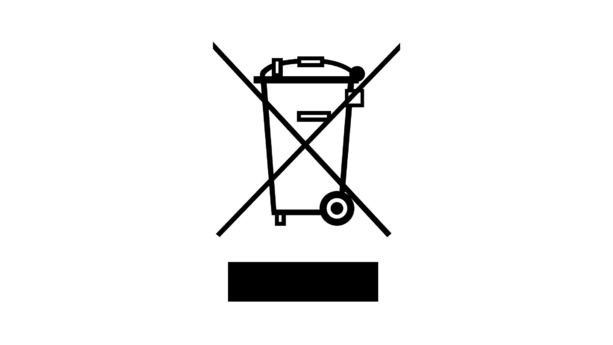
The Waste Electrical and Electronic Equipment Regulations (2013) regulate most EEE in the UK. The legislative aim is to decrease the amount of waste sent to landfills or for incineration. To this end, manufacturers, importers, and distributors (inclusive of retailers) are compelled to play their part in the recovery, reuse, and recycling of EEE products and their components.
Product Scope
The legislation covers 14 broad categories and contains product exemption and exclusion categories that should be observed.
Products affected by the legislation include:
- Electric fans
- Electric heating appliances
- Electric knives
- Personal and Laptop computers and peripheral devices
- Calculators
- Audio Amplifiers
- Video cameras
Requirements
The legislation imposes obligations on manufacturers, importers, and distributors.
The legal obligations include:
a. Registering annually and reporting the amount of EEE placed on the UK market in the previous year (the compliance year).
b. Joining a producer compliance scheme, if more than 5 tonnes of EEE are reported during the compliance year
c. Taking on distributor responsibilities (if applicable)
d. Complying with BS EN 504419 by affixing the “crossed-out wheeled bin” and a date mark on the product
e. Making information available on the sustainable reprocessing of EEE products and components
f. Retaining all relevant documentation for at least 4 years
Waste Batteries and Accumulators Regulations

The Waste Batteries and Accumulators Regulations 2009 regulate batteries and accumulators placed in the UK market to promote sustainable practices.
Product Scope
The legislation covers most batteries of various physical appearances and associated appliances.
Requirements
The legislation imposes legal duties and technical requirements for manufacturers to comply with. They include:
a. The mandatory duty to collect and recycle batteries and accumulators (inclusive of waste reporting duties)
b. Employing incineration and landfill dumping prevention measures
c. Restricting substances (e.g. mercury, cadmium) used to agreed levels
d. Placing chemical labelling and a crossed-out wheeled bin symbol on the battery complying with design requirements
General Product Safety Regulations
The aim of the General Product Safety Regulations 2005 is to ensure the safety of consumer products, including electronics, by imposing the general duty to supply safe products into the UK market, including traceability and monitoring requirements.
Thus, producers should assess their product for safety. To fulfil the duty, producers should aim for a “presumption of conformity” by meeting designated standards.
Product Scope
The legislation applies to most consumer products unless the product is affected by specific UK legislative provisions. Thus, they function as a “catch-all” set of regulations for such unaffected products.
For instance, electrical safety requirements would apply to products that don’t fall under the scope of other regulations that cover electrical safety, such as the the Radio Equipment Regulations or the Electrical Equipment (Safety) Regulations.
Here are some examples:
- Wired mouses
- Laser pens
- USB sticks
- Audio soundcards
Requirements
Importers and manufacturers should:
a. Provide consumers with relevant product safety information
b. Allow for traceability (including adding a traceability label to the product and packaging)
c. Ensure that the product is safe
d. Adopt a risk assessment system
e. Notifying distributors of actual or potential risks, and reporting to enforcement authorities actual risks to consumers. In the latter case, taking risk preventive measures
Reference standards
Complying with a voluntary standard provides a presumption of conformity. Here are some applicable standards:
a. BS EN 60065 – Audio, video and similar electronic apparatus – Safety requirements
b. BS EN 60950-1 – Information technology equipment – Safety – Part 1: General requirements
c. BS EN 957-7 – Stationary training equipment – Part 7: Rowing machines, additional specific safety requirements and test methods
UK REACH
The UK REACH legislation restricts chemicals and heavy metals found in most products, including electronic components, manufactured or sold in the UK. It also applies to plastic and metal casing, paints, coatings, packaging, and other materials.
Here are some examples of substances found in electronic components that can be restricted:
- Nickel
- Lead
- Cadmium
- Mercury
Lab testing
Lab testing against designated standards permits importers and manufacturers to claim the presumption of conformity with the corresponding legislative requirements.
Here are some lab testing companies that offer testing against EEE products in the UK:
- Eurofins Electrical and Electronics (E&E)
- Intertek UK & Ireland
- RN Electronics
- SGS United Kingdom


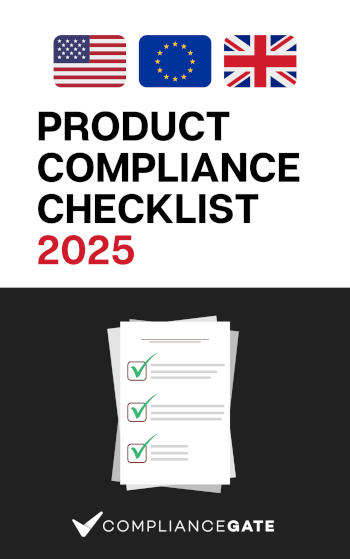




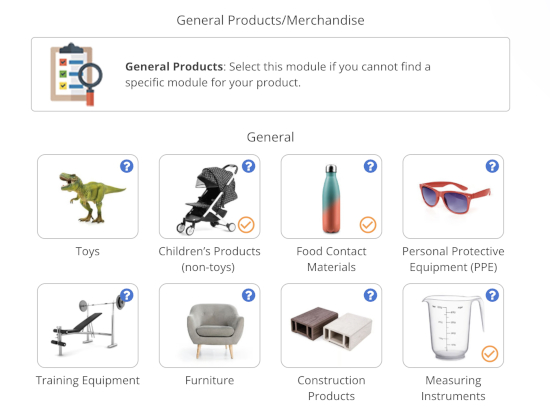






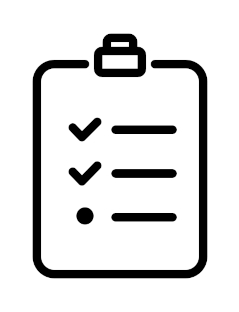


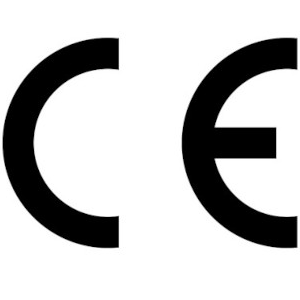




.png)
.png)
.png)
